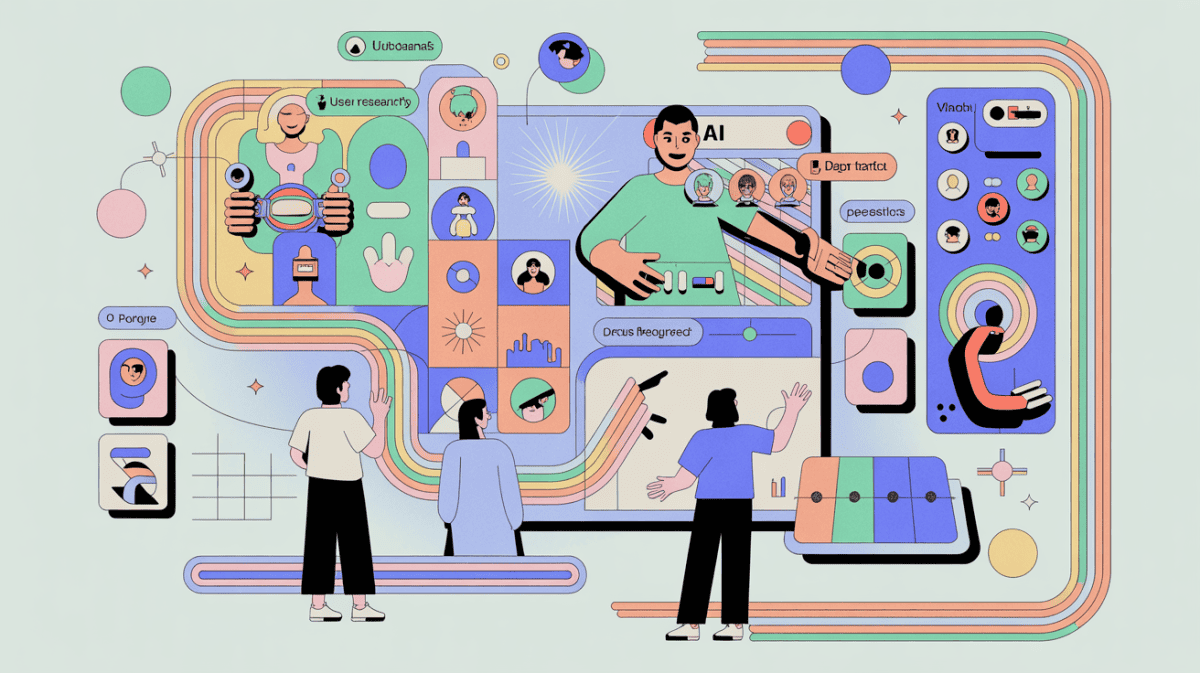In the fast-paced world of user experience (UX) design, staying ahead of the curve is crucial. Enter synthetic users: AI-generated entities that promise to revolutionize how we conduct UX research. But what exactly are synthetic users, and how might they reshape our approach to understanding user needs and behaviors? Let’s dive deep into this innovative concept and explore its potential impact on the future of UX research.
What Are Synthetic Users?
Synthetic users are AI-generated entities designed to simulate real user behaviors and responses. Created from vast datasets, these digital avatars can engage in unlimited conversations, providing researchers with a unique blend of qualitative and quantitative insights. Think of them as highly sophisticated, data-driven personas that can interact and respond in real-time.
How Are Synthetic Users Created?
The process of creating synthetic users involves:
- Data Collection: Gathering large datasets from various sources, including public blogs, social media, forums, and scientific research.
- Data Analysis: Using machine learning algorithms to identify patterns, behaviors, and preferences within the data.
- Model Training: Developing AI models that can simulate user responses based on the analyzed data.
- Persona Development: Creating detailed synthetic user profiles with specific demographics, interests, and behavior patterns.
The Advantages of Synthetic User Research
The introduction of synthetic users in UX research brings several compelling benefits:
- Speed and Efficiency: Synthetic users can process large volumes of data rapidly, allowing for quicker iteration in product development. This can significantly reduce the time-to-market for new features or products.
- Scalability: Researchers can conduct thousands of “interviews” with minimal additional effort. This scalability enables more comprehensive testing across various user segments.
- Consistency: AI-driven responses eliminate human inconsistencies and fatigue, providing more reliable data over extended research periods.
- Cost-Effective: By reducing the need for recruitment and compensation of human participants, synthetic users can make research more accessible for companies with limited budgets.
- 24/7 Availability: Research can be conducted at any time, accelerating the design process and enabling global teams to work asynchronously.
- Exploration of Edge Cases: Synthetic users can be programmed to represent rare user types or extreme scenarios, allowing designers to test for a wider range of use cases.
- Rapid Prototyping: Quick feedback from synthetic users can help designers iterate on ideas faster, potentially leading to more innovative solutions.
Real-World Applications
Let’s explore some practical applications of synthetic users in UX research:
- Early-Stage Concept Testing: Designers can use synthetic users to quickly gauge initial reactions to new product concepts. By simulating a diverse range of user profiles, teams can identify potential issues or opportunities before investing in full-scale prototyping.
- Localization and Cultural Adaptation: Synthetic users can be programmed with cultural nuances, helping companies test how their products might be received in different global markets without the need for extensive international research.
- Accessibility Testing: By creating synthetic users with various disabilities or accessibility needs, designers can more easily test and improve the inclusivity of their products.
- Long-Term User Behavior Prediction: Synthetic users can be used to model how user behaviors might change over time, helping companies anticipate future needs and trends.
Limitations and Challenges
Despite their potential, synthetic users are not without drawbacks:
- Lack of Emotional Nuance: AI struggles to capture the subtleties of human emotion and context. This can lead to missed insights in areas where emotional responses are crucial.
- Data Bias: The quality of synthetic users depends on the data they’re trained on, which may contain inherent biases. This could perpetuate or even amplify existing prejudices in design.
- Missing Non-Verbal Cues: Synthetic users can’t provide visual or auditory feedback crucial in some UX scenarios, such as physical product testing or voice interface design.
- Ethical Considerations: The use of AI-generated data raises questions about privacy and consent. There’s also the risk of over-relying on synthetic data at the expense of real human input.
- Complexity in Implementation: Developing and maintaining accurate synthetic user models requires significant technical expertise and resources.
- Risk of Oversimplification: There’s a danger that complex human behaviors could be reduced to simplistic algorithms, leading to flawed design decisions.
Balancing Synthetic and Human Research
While synthetic users offer exciting possibilities, they’re unlikely to replace human participants entirely. Instead, they’re best viewed as a powerful complement to traditional research methods. Here’s how researchers can strike a balance:
- Use Synthetic Users for Initial Insights: Employ AI-generated users to quickly identify obvious usability issues or general preferences.
- Validate with Human Participants: Follow up synthetic user research with targeted studies involving real users to verify findings and explore nuanced reactions.
- Combine Methodologies: Use synthetic users for quantitative data gathering and human participants for qualitative, in-depth insights.
- Continuous Refinement: Regularly update synthetic user models with new data from real user interactions to improve their accuracy over time.
The Future of UX Research
As synthetic user technology evolves, we can expect to see:
- More Sophisticated AI Models: Advancements in natural language processing and emotional AI could lead to more nuanced and realistic synthetic user interactions.
- Integration with VR and AR: Synthetic users could be incorporated into virtual environments, allowing for immersive testing of spatial and interactive designs.
- Predictive UX Design: By analyzing vast amounts of user data, synthetic users could help predict future user needs and preferences, enabling proactive design.
- Ethical Guidelines and Standards: As the use of synthetic users grows, we’ll likely see the development of industry standards and ethical frameworks governing their use in research.
Conclusion
Synthetic users represent a significant leap forward in UX research capabilities. They offer the potential for faster, more scalable, and more diverse user insights. However, their limitations remind us of the irreplaceable value of human empathy and real-world context in design.
As we move forward, the key will be striking the right balance between AI-driven efficiency and human-centered empathy in our research practices. By embracing this new tool thoughtfully and ethically, we can unlock new levels of insight and innovation in user experience design.
What are your thoughts on synthetic users in UX research? Are you excited about the possibilities, or do you have concerns? How do you envision integrating this technology into your design process? Share your views in the comments below!


Leave a Reply